Everybody is familiar with the iconic AR-15, but just where did it come from?
To learn the history of the AR-15, you have to first look at the genius behind it…Eugene Stoner.
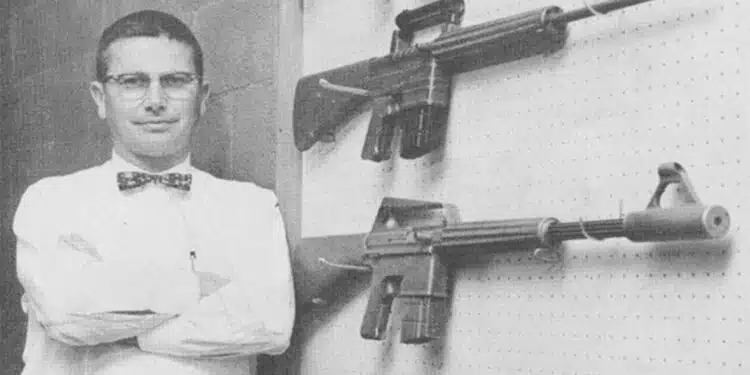
So, follow along as we talk about Stoner, his life, and what led him to create one of the most notable rifles in history.
Table of Contents
Loading…
The Early Years
Born in 1922, Stoner graduated from high school right in time for the beginning of World War II. Immediately after graduation, he landed a job at Vega Aircraft Company, installing ordnance. It was here that he would first learn about manufacturing arms.
But then Pearl Harbor happened, leading Stoner to join the Marines soon after.

His background in ordnance resulted in him being shipped to the Pacific Theater, where he was involved in aviation ordnance.
After the war, Stoner hopped around from a few different engineering jobs until he landed a position with a small division of the Fairchild Engine and Airplane Corporation known as Armalite.
Stoner’s AR-5 & AR-10
Stoner’s first major accomplishment at Armalite was developing a new survival weapon for U.S. Air Force pilots.
This weapon was designed to easily stow away under an airplane’s seat, and in the event of a crash, a pilot would have a rifle at the ready to harvest small game and serve as an acceptable form of self-defense as well.

The result was known as the Armalite Rifle 5 – the AR-5. Though the modern semi-auto version is known as the AR-7, this weapon can still be found in gun cabinets across America.
Prices accurate at time of writing
Prices accurate at time of writing
-
25% off all OAKLEY products - OAKLEY25
Copied! Visit Merchant
Eugene Stoner had already left his mark but was far from fading into the shadows. He was just getting started.
The AR-10
Stoner continued his work at Armalite, but it wasn’t long until another opportunity appeared for him to change the course of history…the Vietnam War.
In 1955 the U.S. Army put out a notice that they were looking for a new battle rifle. A year later, the Army further defined they wanted the new weapon to fire the 7.62 NATO.
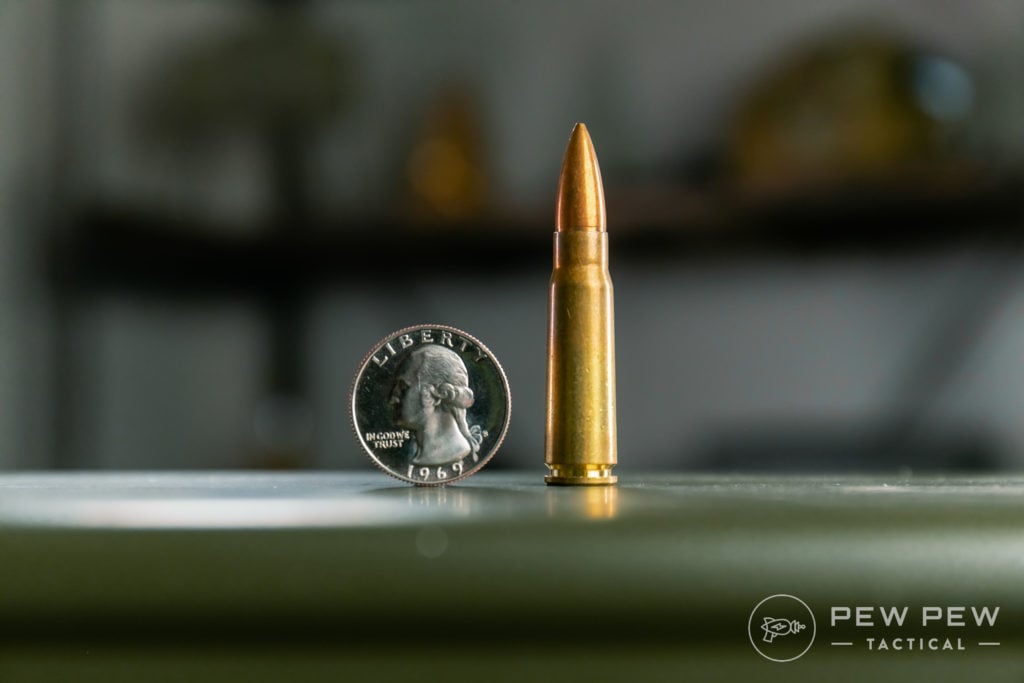
Tinkering in his garage, Stoner emerged with a prototype for a new rifle not long afterward called the AR-10.
The AR-10 was the first rifle of its kind, as never before had a rifle utilized the materials Stoner had incorporated.
Guns had always been made of wood and steel, but Stoner drew from his extensive history in the aircraft industry, using lightweight aluminum alloys and fiberglass instead.
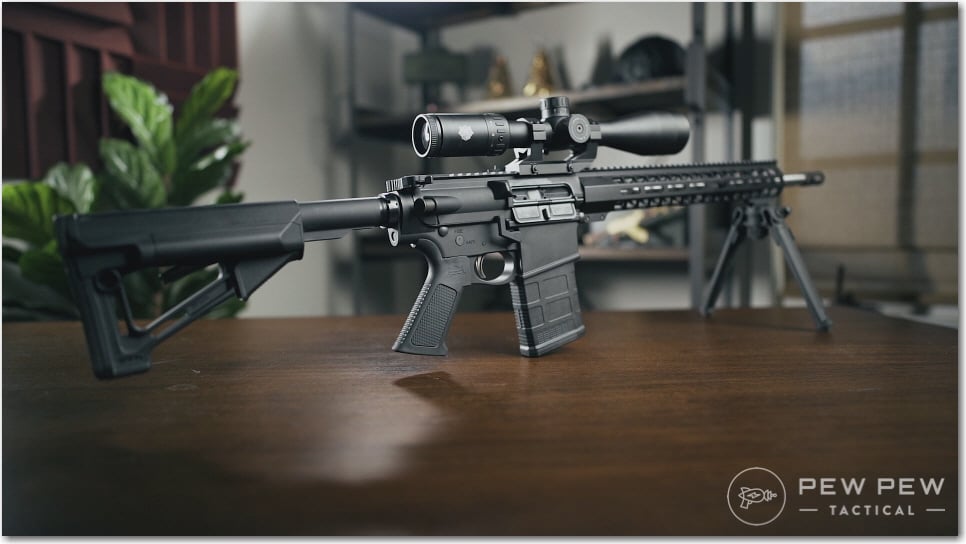
This made his AR-10 a lighter weapon that could better resist weather.
Unfortunately, Stoner was late to the race, and the M14 was chosen as the Army’s battle rifle of choice instead.
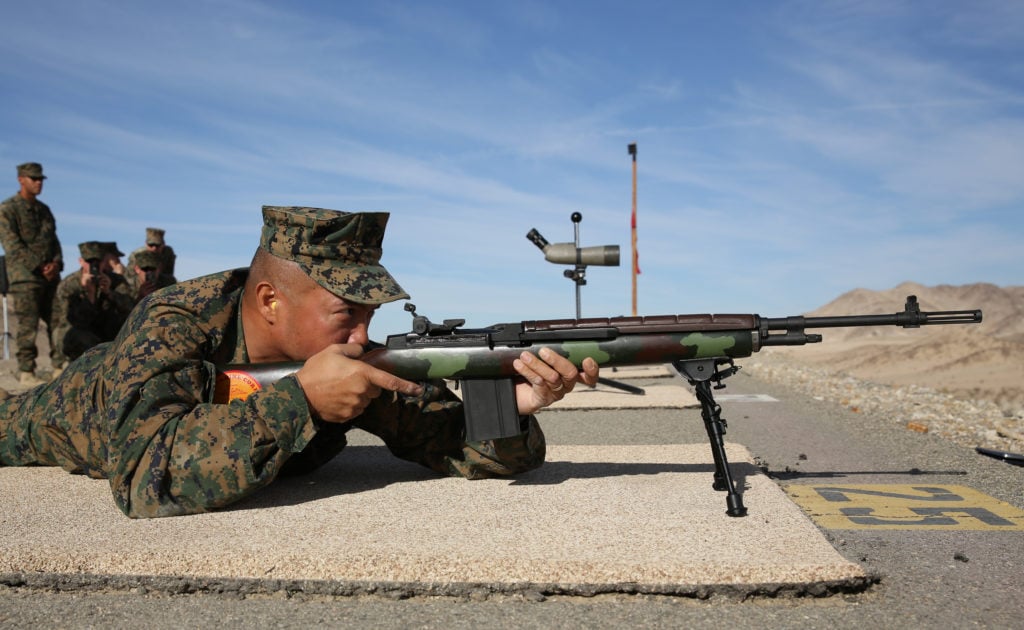
The designs for the AR-10 were sold to the Dutch instead. Stoner returned to his day job, focusing on the regular rut of daily life.
But then the Army called again…
Eugene Stoner Invents the AR-15
As it turned out, the M14 was too heavy with too much recoil and difficult to control while under full auto.
In addition, the 7.62 NATO was overkill within the jungles of Vietnam. Often the enemy couldn’t be seen beyond 50 yards, meaning that a lighter weapon could still accomplish the job and let soldiers carry more ammunition while on patrol.
Adding further urgency to the need was the Soviet development of the AK-47.

Amid The Cold War, the idea that the communists may have a better battle rifle than American soldiers was concerning.
So, the Army needed a new battle rifle.
Returning to his AR-10 plans, Stoner set to scaling things down. The AR-10 was modified to use the .223 Remington, with the new rifle designated the Armalite Rifle–15 or AR-15.
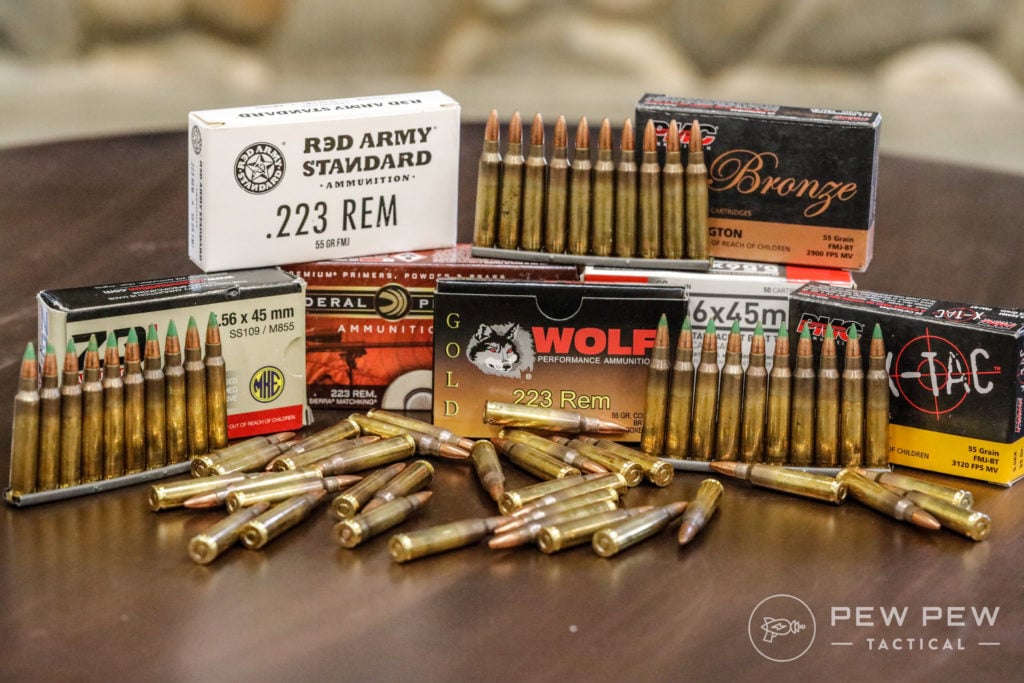
However, Armalite didn’t have the resources to produce weaponry on a mass scale, so they sold the designs to Colt.
Colt presented the design to the Army, but Army officials dismissed the design. It seemed they preferred the traditional look and feel of wood and steel over the AR-15’s aluminum and plastic.
The U.S. Air Force Saves the AR-15
But the story doesn’t end there…
At an Independence Day cookout in 1960, a Colt contract salesman showed Air Force General Curtis LeMay an AR-15. Immediately, LeMay set up a series of watermelons to test the rifle.
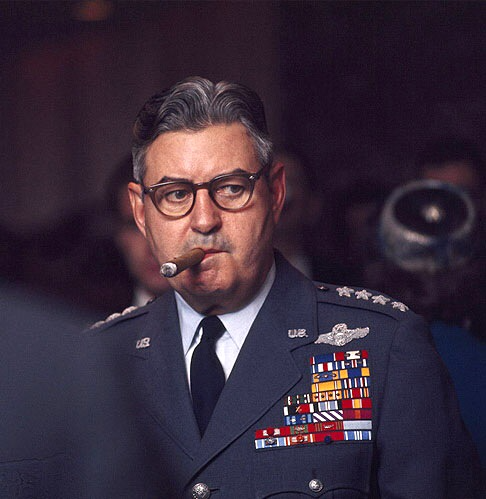
LeMay ended up so impressed with the new gun that the very next year – after his promotion to Chief of Staff – he requested 80,000 AR-15s to replace the Air Force’s antiquated M2 rifles.
His request was denied, and the Army kept supplying American soldiers overseas with the M14.
In 1963, the Army and Marines finally ordered 85,000 AR-15s…redesignated as the M16.
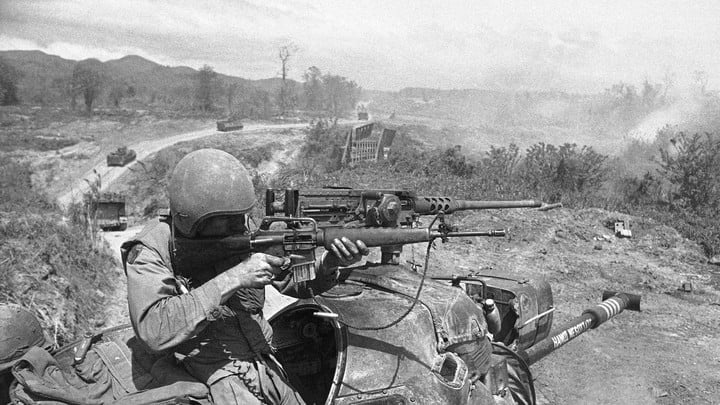
M16 Faces Trouble
Immediately, the Army began to fiddle with Stoner’s design. They changed the powder to a design that proved more corrosive and generated much higher pressures.
Also, they added the forward assist (which Stoner hated). Inexplicably, they began to advertise the weapon as “self-cleaning.”
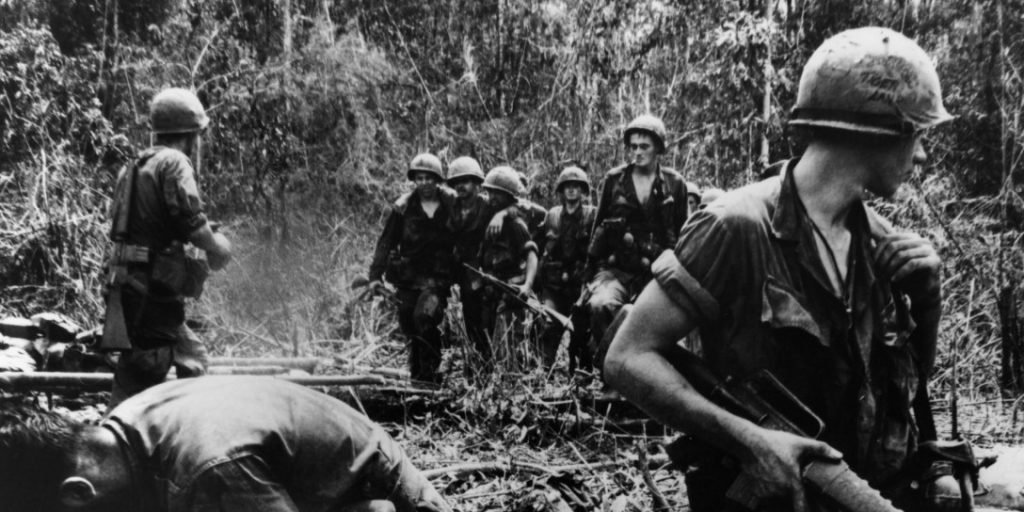
They then shipped thousands of rifles – without manuals or cleaning gear – to men in combat overseas. Men trained on an entirely different weapon system.
As expected, American solider began to experience jammed M-16s on the battlefield.
The Stoner 63
By this point, Stoner had left Armalite, served a brief stint as a consultant for Colt, and finally landed a position at Cadillac Gauge (now Textron).
It was there between the years of 1962-1963 that he began designing one of the most versatile firearms designs of its time: the Stoner 63.
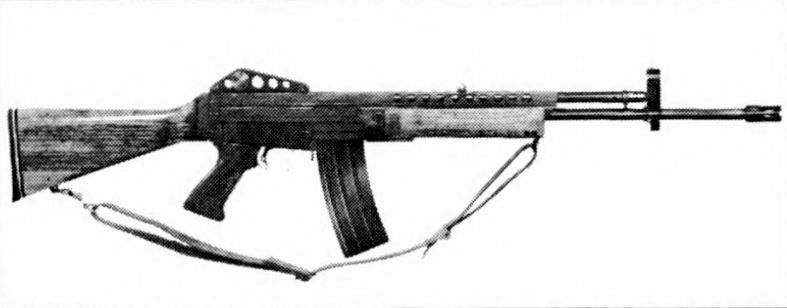
The Stoner 63 was a modular system chambered in 5.56 NATO. Stoner crafted this weapon to be something of a Mr. Potato Head. The lower receiver could be transformed into just about anything.
A carbine, rifle, belt-fed SAW, vehicle-mounted weapon, and top-fed light machine gun were all variations of the Stoner 63, which could easily be crafted from the common receiver.

Interchangeable parts were utilized across the platform, and the barrels didn’t need tools to be swapped out. This was the Swiss Army knife of guns. It was truly a game-changer.
The catch was that it didn’t like to work as well on extended missions. There were so many moving parts, with such fine tolerances, that when spending weeks in the muddy jungle with a Stoner 63, the odds of losing a component or having a dirty, jammed gun were dangerous.

While the system worked wonderfully on quick missions of a few hours, it was deemed too much of a risk for use amongst the basic infantryman.
Despite this, the Stoner 63 still saw widespread use throughout the Special Forces before finally being retired in 1983.
ARES
In 1972, Stoner finally left Cadillac Gauge to start his own company, co-founding ARES with a friend.
Aside from making improvements on the Stoner 63 — with the new model called the Stoner 86 — he also began working on yet another rifle design that sadly never took off, known as the Future Assault Rifle Concept or FARC.
Stoner would continue designing weapons with ARES until he received an offer from Knight’s Armament Company.
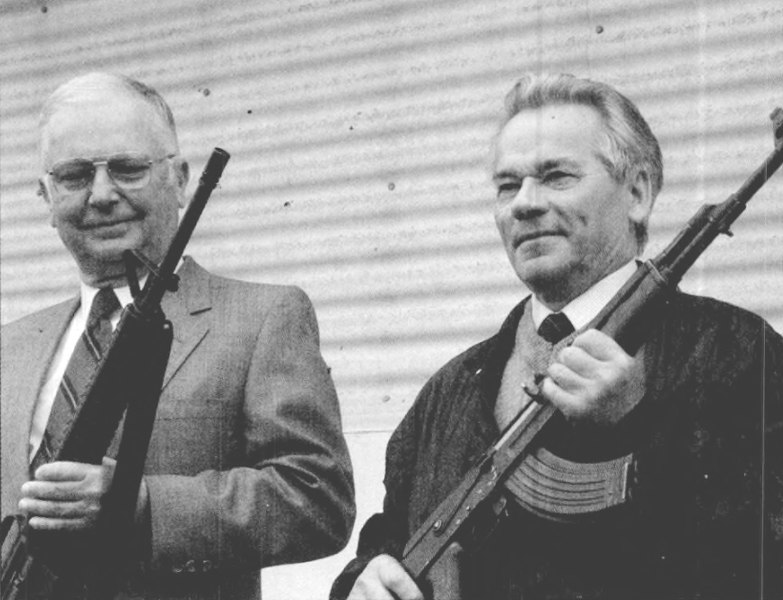
Knight’s Armament Company
Knight’s Armament Company would be the final company where Stoner would produce his legendary work.
Almost immediately, Stoner developed the SR-25 rifle, a more accurate version of the AR-10.
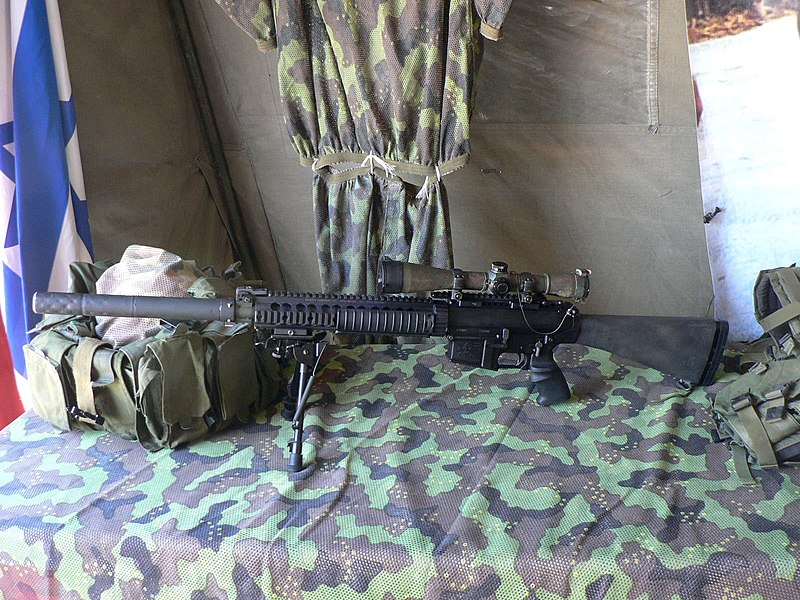
The Navy SEALS would finally adopt the weapon in 2000 as their Mark 11 Mod 0 Sniper Weapon. It would see use until finally being phased out 17 years later in 2017.
Another sniper rifle, the KAC SR-50, was also developed but strangely fell to the wayside due to political pressure.
As police departments nationwide began to upgrade their .38 Special revolvers for the new-tech polymer Glock, Stoner jumped into the fray.
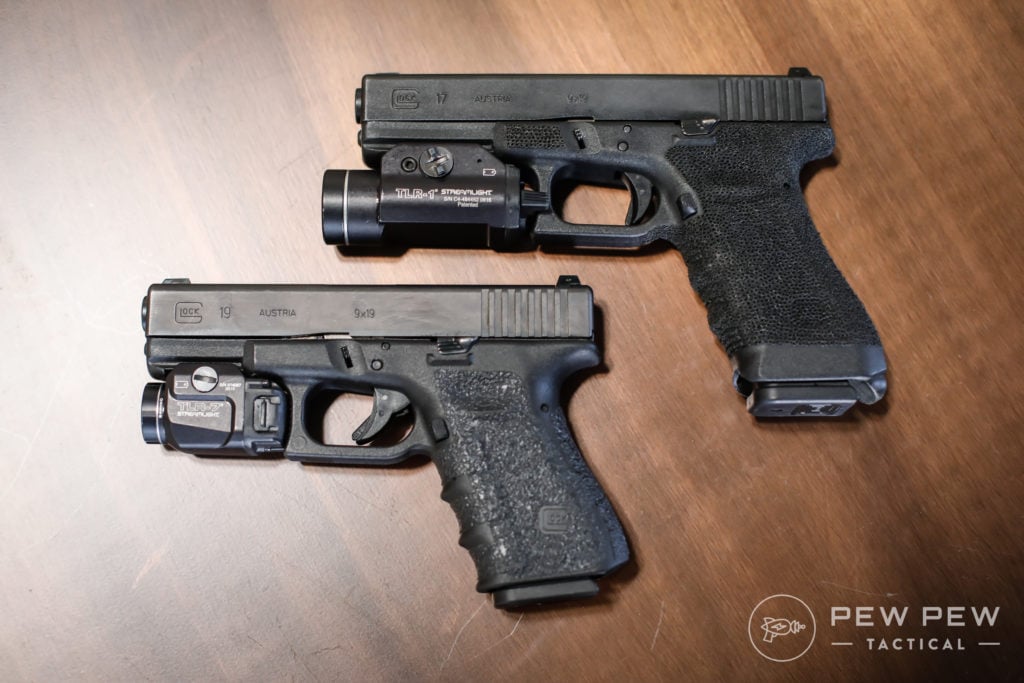
He created a polymer-framed, single-stack, striker-fired design that showed great promise.
But the weapon was so unwieldy and inaccurate (engineers had bumped Stoner’s initial 6-pound trigger pull up to 12 pounds) that it was a fiasco. Colt would later pull it from shelves in 1993 over safety issues.
It was yet another frustrating end to what was originally a great design.
Final Thoughts
Eugene Stoner passed away from brain cancer in 1997 in the garage of his Palm City, Florida home.
By the time of his death, there were nearly 100 patents that were filed in his name. Not to mention, he’d revolutionized both the world of firearms and Americans’ ability to defend themselves.

What are your thoughts on Eugene Stoner and his designs? Let us know in the comments below. Want to learn more about other firearms designers? Check out our list of the 5 Most Influential Gun Inventors. Or, for your very own AR-15, check out our list of the top recommended AR-15 models.

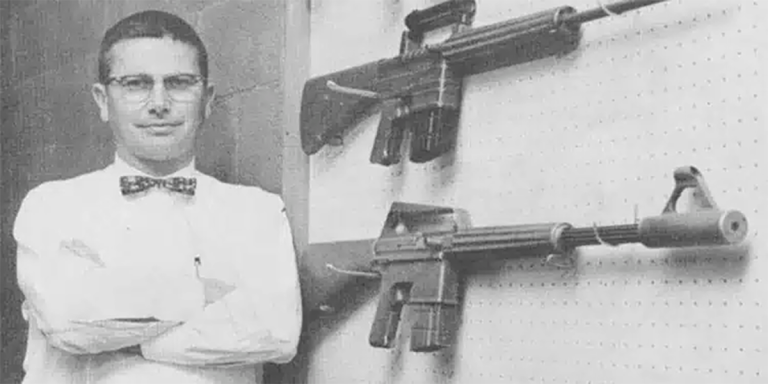








6 Leave a Reply
St. Stoner. The man should be Canonized.
Not to forget the AR180 - a more conventional 5.56 based weapon, and currently being reprised by Brownells. It was produced in LA and overseas, and saw use in Africa and more notoriously, Ireland during the conflict there. It also spun off a lot of the features we now see in non AR based battle rifles.
The AR's biggest contribution is the barrel extension, not the bolt carrier so much, as it allowed the locking lugs to be attached to the barrel assembly, and it was screwed together making it much easier to set head space compared to pressing a trunnion in a lower receiver. Another much copied feature are the control placement on the lower, making it much easier to reload - the bolt hold back means you drop a mag, insert a new, then slam it home loading it, which is a superior method and much quicker.
Then we get to the bolt carrier with integral gas piston - which few gun guys even recognize. As for the gas tube making the action dirty, it doesn't - the barrel blows back around the cartridge case like any other delayed opening rifle. If you've owned a blow back .22 or a HK 91, its obvious - there is no gas system in those. Same with any other, if you get dirty brass, it's not from a gas cylinder - its from the brass casing acting like a gas powered piston as it presses against the bolt face during it's extraction. In point of fact, that is how to test operation for proper port size and it's location for timing - you remove the extractor and it should still function, round after round. An extractor is really only needed to pull out a live round. << and there are a lot of AR owners who don't know that. If the extractor is ripping off the rim, the timing and port size are wrong.
One of the difficulties with the M series guns is that there are 20", 14.5" and 10.5ish" guns in service, all using just two or three load, all of which are required to function in the other guns. So, some license in tuning by Colt, etc was used and that is why there are extractor o rings and other bandaids in the different models. The gas system in a combat rifle has to have optimized cartridges for that barrel length - something commonly done in the military - but the M series rifles with their variations have pushed the envelope pretty far to accommodate it. That is why AR15's are NOT Legos and why there are combinations of parts that cannot function together.
I'm on my third build, the first a 6.8SPC, second an 10.5 AR pistol in 5.56, and now a .375 SOCOM midlength dissipator with rifle handguards. None of the bolts are interchangeable with the other - the 6.8 has its own magazines - and the optics are all different, as they have different purposes. Understanding that the gas port is measured from the muzzle for timing purposes has been substantially reinforced three times now. A self loading action rifle doesn't follow the rules of a bolt gun, it's much more like a overhead valve gas engine - timing is everything.
"Eugene Stoner Invents the AR-15"
Technically he didn't. Basically; Actually, it was Jim Sullivan that scaled the AR-10 down as at the time Armalite wanted to create a civilian only semi-auto sporting/hunting rifle with 'military styling' to capture the growing niche market of people interested in a semi-auto 'sporting/hunting rifle' with military styling 'cosmetics' features. So Sullivan scaled the AR-10 down and that scaled down design was designated the 'AR-15' (meaning the 15th rifle in the Armalite design series) and Stoner took that work and changed it into a rifle for military use as Stoner was really only interested in military firearms and knew the military was looking around for a replacement and convinced Armalite to try to market his rendition to the military. The 'AR-15' designation stuck with it because the Stoner rendition was based on the same downscale design by Sullivan. So actually, the AR-15 was originally created to be a civilian only rifle and not a military rifle.
If this place would let me post links .... this is a known thing only its was suppressed in the U.S. by anti-gun interest and media pushing the thing that the AR-15 was created as a military only rifle ... although it appeared in BBC coverage outside the U.S. and more recently in 2022 it was discovered by, oddly enough, a left-wing journalism think-tank and partially exposed it on their "Poynter" web site with "The origin of the AR-15 .... First developed in the 1950s for civilian use, the AR-15 rifle was named after its manufacturer, Armalite. "
Basically the Stoner rendition added select fire and some other minor changes to meet the military requirement. The rifle was already scaled down to .233 by Sullivan by the time Stoner started on his rendition, it was ready to go as a civilian rifle only needing some 'polishing' touches to be marketed. So Stoner joined with Sullivan and some others and from there his rendition with some changes for the military requirement.
I agree, it was Stoner's team who downsized it. One of the influences was a study called "Project Salvo" which put together all the small caliber results from using less than .30 bullets downrange in battle - something dating from before the Garand, with the .276 Pederson.
What they concluded is that 1) the .30-06 actually created hesitation in repeat fire, as the recoil was unpleasant in combat. No, more pushups did NOT fix it. Buy going to a smaller round, it reduced recoil and acted as an incentive to fire it.
2) That created more bullets going downrange. Studies showed that a lot of casualties were happening because the enemy moved into the path of a bullet - one never actually aimed at them. This caused more wounds and disabled soldiers from returning fire. That meant more loss of fighting power, inability to defend or react with counter tactics and loss of the battle ground. It wasn't meant to be a "more wounding" round as much as less powder wasted on trying to KIA them right there. The effective result was, again, more loss of battle power. Dead or alive, if you can't shoot back, you lose. Since the smaller cartridges were increasing casualties sooner rather than later in the engagement, it was a win.
The early M16's fielded in Vietnam were well made and worked right. They were being assembled carefully, using good powder, even if it wasn't the low residue low flash the ammo was supposed to get. Then McNamara's whiz kids stepped in to force double the deliveries and equip most soldiers with them on an accelerated schedule. Colt subcontracted barrels, the ammo makers got approval to use repurposed Navy powder, and they flat screwed things up. It was like trying to make a Hemi run on diesel. Subject Matter Experts were ignored and the historical results placed the blame on anybody not connected with the program.
I searched the internet last year and read article after article, they censor it out that stoner invented the AR for sportsman to use I had a friend called me up last summer , he’s an avid hunter and the first thing he said was Stoner invented it for sportsman to use , not the military I read about it and saw an interview with him many years ago , he said he invented it for sportsman to use , When I was in the military we didn’t call them assault weapons that was never heard of , but called them only the M-16 . Then when your own government trains you and states want to ban you for owning one that’s not a republic democracy but a dictatorship .